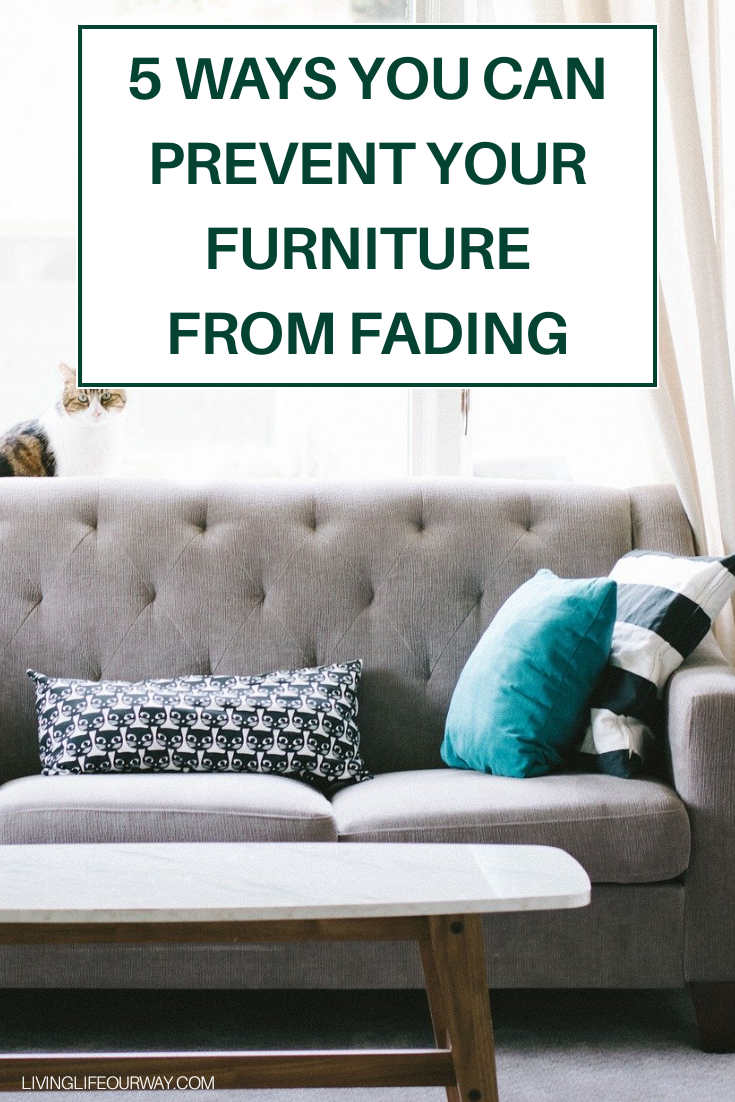It was Dickens that said “Spring is that time of year when it’s summer in the sun and winter in the shade”.
While you may find yourself making a beeline for the summer sun, your furniture might be best hidden in the shade. We all know it’s important to use sunscreen to protect our skin from ultraviolet (UV) radiation, but did you realise how harmful UV can be to the interiors of our homes? Furnishings, flooring, artwork and even books are prone to fading, and as the days lengthen over the next few months, you may wish to start thinking about how to protect your belongings from the sun’s intensifying rays.
Below you’ll find some pointers on how to prevent your furniture from fading without compromising your interior design…

Rearrange your furniture
Let’s start with the obvious.
On a bright day take some time out to sit awhile and watch how the sun interacts with your room. Are there shaded spots that your most vulnerable furniture – those with dyed fabrics – might be best situated?
Smaller furniture in particular should be easy to tuck away in a shaded corner. Bookshelves aren’t too difficult to push into a corner if you’d prefer to avoid faded book spines and yellow page edges.
If your room is south facing and has large windows, you’re in for a tough time trying to find somewhere that direct sunlight won’t reach. If your room is dual aspect, give it up now – you’ll need to explore other solutions.
And of course, none of this will help prevent carpets, rugs or wooden floors from being damaged.
Think about window furnishings
If you love how your bright room lifts your mood and you don’t fancy sitting in the gloom, you won’t enjoy thinking about ways to let less light enter your home. However, there are compromises you can make that will help you protect your furnishings and add character to your home without turning your room dark and dreary.
Sheer curtains could be the answer. They’re lightweight so won’t dominate, and are translucent so while they lessen the damage caused by direct sunlight, they allow plenty of diffuse light to enter. They’re also available in various colours and grades of transparency, so you shouldn’t have any trouble finding the perfect fit for your room.
Blinds are another versatile option as you can easily adjust the slats to protect your furniture, while still ensuring plenty of light enters your room. Vertical blinds have a bit of an office vibe but the Venetian type can look great in almost any room. If you have a period home you may wish to explore the possibility of installing external or internal shutters.
You could even look to replace your double glazed panels with windows that have integral or interstitial blinds fitted. The best thing about interstitial blinds is that they’re sealed between glass panes, so the slats can’t be damaged and they don’t need to be dusted.
How about solar blinds?
Solar blinds are quite the rage at the moment. They provide diffuse light, reduce the amount of UV reaching your furniture and can stop your room from overheating in the summer months. Much like sheer curtains, they’re constructed from translucent material that provides a view of the outside world while making it more difficult for people outside to see in. If you’re concerned about privacy you may prefer a less translucent grade, as anything happening in a room lit by electric light at nighttime will be visible to someone taking a keen interest.
Solar blinds are available in vertical or roller designs and come in all sorts of colours, so you should have no trouble matching your blinds to your home’s interior.
Sunglasses for your windows
Solar window film blocks up to 99% of damaging UV light, helps reduce cooling and heating costs, controls glare from the sun and can also increase privacy in the home.
While it’d be tempting to turn this into a DIY task, high quality solar film should be applied by a professional. It may also be worth checking with your window manufacturer that applying film won’t invalidate any warranties, albeit many window film installers offer overriding warranties should they be necessary. Once adhered, be sure to avoid using any sharp objects or scrapers when cleaning your windows.
These films vary in terms of quality and are made from different material depending on their intended use. Almost all films will darken your view of the outside world to some extent, depending on which option you select for your home.
Change your window glass
If you’re already considering changing your windows, be sure to select glass that has an energy-efficient coating designed to moderate the heat in your room and protect your furniture from UV light.
If your frames are in good condition and don’t need to be changed, it’s possible to replace just the double glazed unit and retain the uPVC, wood or aluminium frame. It’s relatively inexpensive to swap out existing glass with a low-E, energy-efficient alternative, and you don’t need to replace all the glazing in your home. Prioritise the rooms most affected by UV radiation, which would typically be those facing east or south.
This is a great solution if you prefer to have undressed windows and crystal clear glass, and if your existing windows have poor thermal performance then you’re killing two birds with one stone.
*This is a collaborative post


Really cause me big issies – just have to put more thought into where i place my furniture